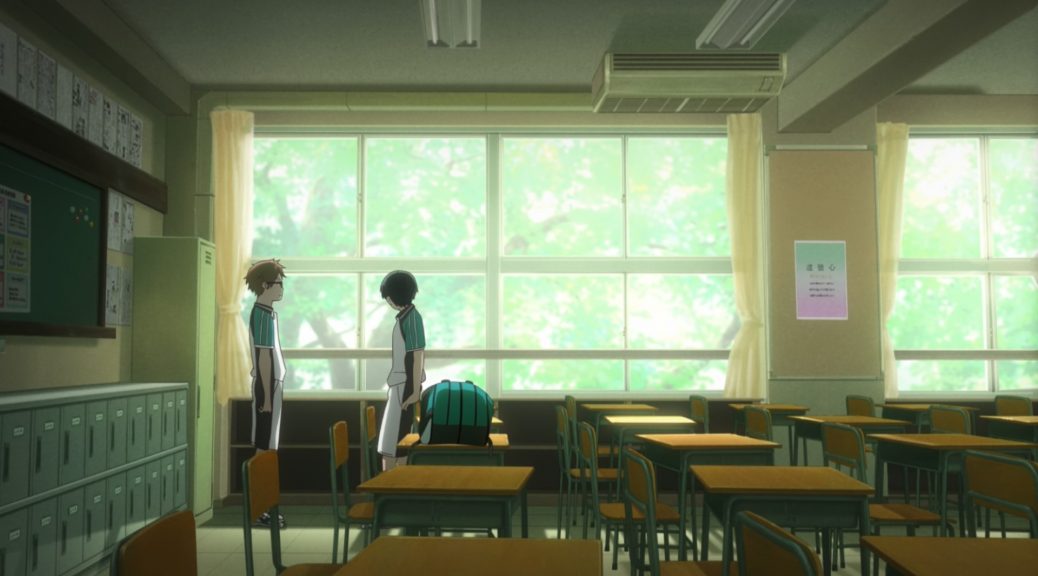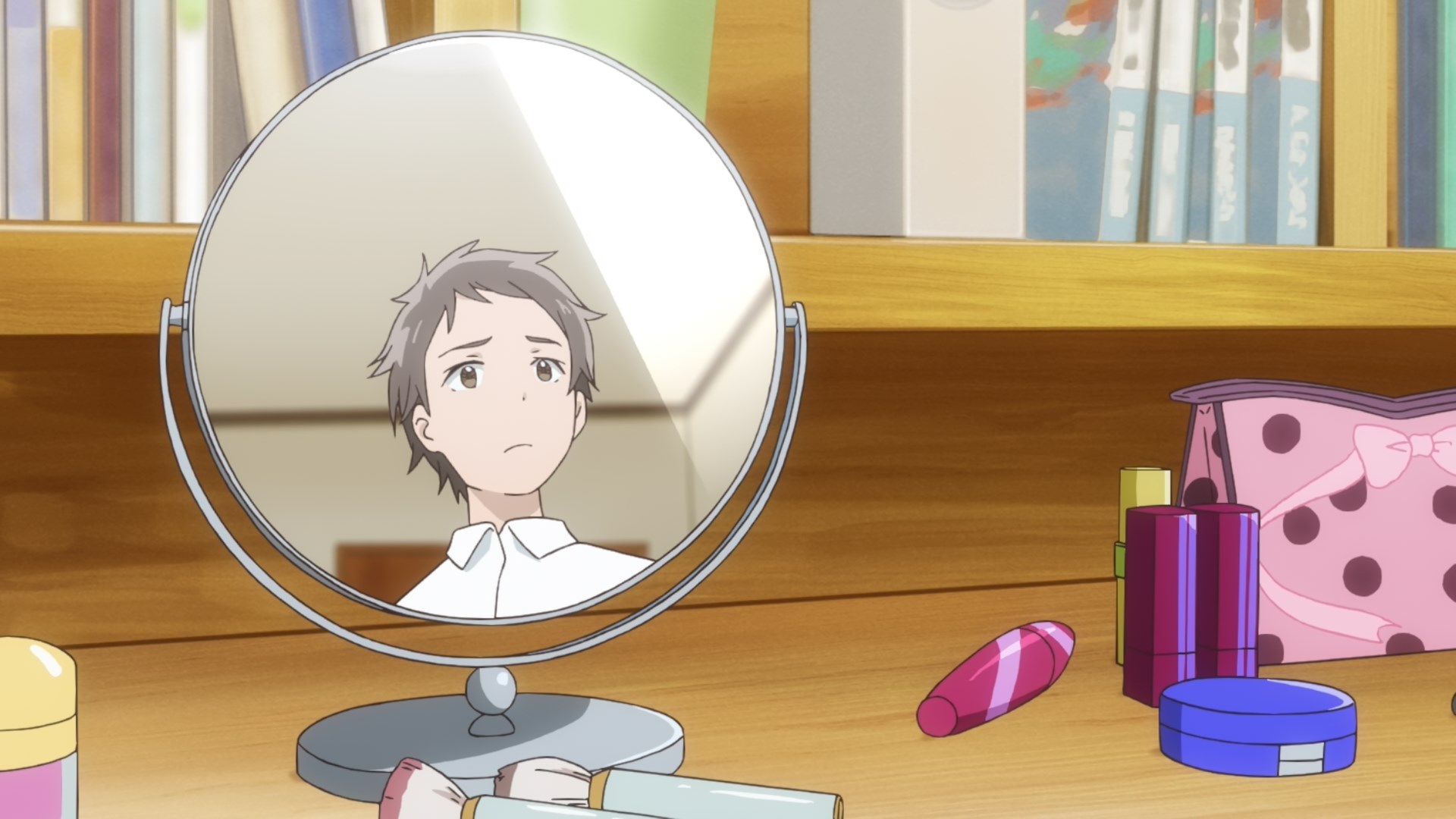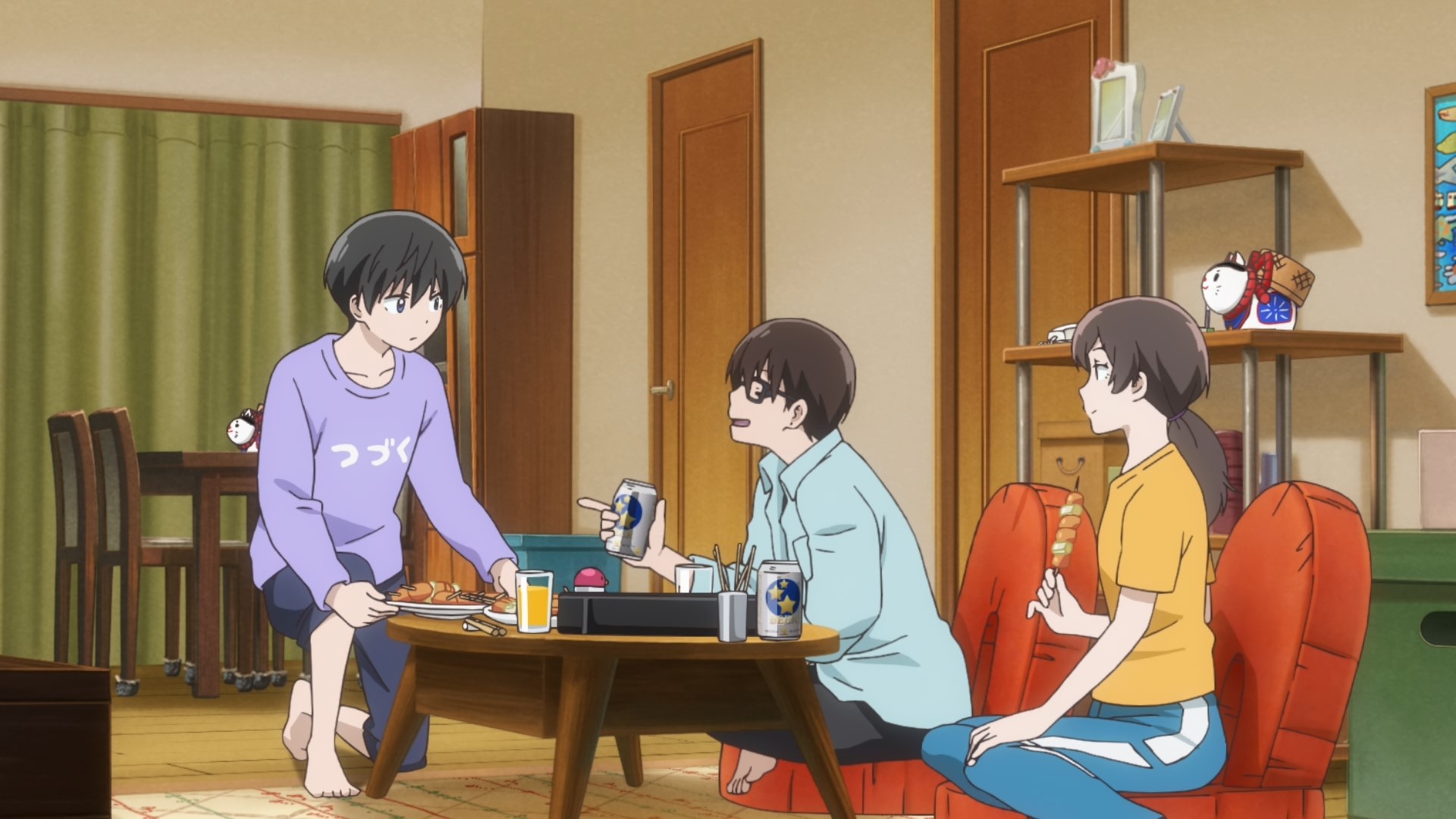
Hoshiai no Sora / Stars Align: A Story About Corporate Betrayal, But Also A Lot More
Hoshiai no Sora / Stars Align was one of 2019’s best shows… then its team got backstabbed, and it became emblematic of the fundamentally unfair system for anime creators. It can’t be forgotten, but the show deserves to be remembered as more than that.
Back when we published the Fall 2019 anime preview, I noted that an outrageous number of talented artists were going to gather (or rather, already had done so) in Fate/Grand Order: Babylonia, so grand pieces of action like the ones that it eventually delivered were to be expected. And yet, when it came to choosing the potentially most ambitious title of the season, I didn’t hesitate to nominate a seemingly much smaller project: Kazuki Akane’s return to the small screen after a decade, in the form of Stars Align.
Three months later, I’d argue that the prediction came true – which honestly isn’t worthy of boasting at all, since the writing was on the wall. Akane has always thought big, and that wasn’t going to change even if he ditched the Sci-Fi tales that he’s known for in favor of down-to-earth family and sports drama.
As the director, original author, and sole writer for Stars Align, he’d originally envisioned it as a modern anime equivalent of Rob Reiner’s Stand by Me film; which is to say, a story about a group of children whose lives are inescapably tied to complicated family circumstances, but reflective of Japan’s current teens as opposed to late 50s America. All the choices the team made afterward, from the soft design philosophy to the subject matter itself (soft tennis being meant to evoke adolescence as it’s very popular among kids that age but vanishes entirely from adult interests), are geared towards that goal. Even though Akane doesn’t see himself capable of making a pure “kids anime,” he proved he can create a series thoroughly preoccupied with them that resonates with slightly older but still young audiences.
That focus on the youth extends to the metatext as well. For all his criticism about anime as a business, Akane’s outlook on Japan’s current animation landscape is brighter than most directors of his generation and pedigree. In contrast to all the people who think talent is drying up, he’s convinced that in recent years the number of talented new animators has risen significantly, even though that’s eventually all wasted because of the short-sighted, purely profit-driven people who call the shots. And, as far as he’s concerned, it’s the job of people like him to tread new paths that these youngsters can follow and actually put those skills to good use.
It’s precisely that mentality that got him to test the current limits of 3DCG action in anime with Code Geass: Akito the Exiled, and also what led him to make Stars Align at 8-bit of all places – a studio that gathers young artists on the regular and is willing to invest strongly in new tech for them to experiment with. Akane seeks innovation not just for his artistic fulfillment, but because he thinks he’s in a position where he can test new creative avenues for the next generations of creators.
Did all these well-meaning feelings lead to an equally powerful work? Absolutely! Stars Align stands out from the start with its willingness to stare family tragedy in the face, the quickly apparent focus on body language of the production, as well as the very snappy dialogue; how a multi-tasking director like Akane writes more amusing conversations than right about any dedicated scriptwriter in this industry is beyond me.
The passage of the episodes only made the show’s strengths more obvious. Despite sticking to the same theme of family issues, Akane came up with extensive, unique backgrounds for every single member of the soft tennis club. Although some of the cases introduced later might test your suspension of disbelief, the show as a whole makes an excellent point about no two abusive households being the same, and how socioeconomic circumstances intersect with parental struggles as well. Despite featuring cases of child abuse this harsh, with emotional & physical scars and even crippling PTSD, it never feels like it’s reveling in tragedy; not only does Stars Align respect its characters too much for that, it’s also the kind of show that understands that sometimes the hardest hitting impact is the one that comes with no theatrics whatsoever. This almost matter-of-the-fact approach is obviously very deliberate audiovisual direction, but the naturalistic result makes for some of the best bad times I’ve had watching anime.
As you might imagine if you’re acquainted with Akane’s unwillingness to compromise, his desire to make each of those boys (and girl!) feel like an individual extends to the animation team as well. Stars Align is an ambitious animation effort – arguably too ambitious, but I’m not one to look down on an idealistic creator. The character specificity of the animation is something that you only come to appreciate in context, but even by sheer volume alone, it’s easy to tell that this modest project had loftier goals than most high-profile anime. Broadcast timing makes it easier to draw parallels with Haikyuu: a truly exceptional sports series, an adaptation of a massive hit in the hands of some of the best character animators in the industry… and yet one that relies a bit more on (smart) usage of stock footage, simply because Akane uses lots of unique soft tennis sequences to highlight the evolution of the cast. Even that innovation in the production process that he wished for manifests itself in interesting ways, be it exploring the characters’ mental state via the compositing itself or integrating the “gimmick” of a match into three-dimensional storyboards.
For another amusing example, consider this: western animators without much experience in anime tend to overdo cuts out of enthusiasm when it comes to the amount of movement, so they’ll often have that reduced so that it’s feasible for the rest of the team to finish. In Stars Align, some of them saw extra drawings added to their roughs to make the sequences more intricate instead. That’s the level of ambition that this small team tackled the project with; something with a positive net effect of course, but also the reason why the production went from featuring cuts finished around 6 months prior to the broadcast halfway through, to wrapping up with only a handful of days to spare before episode #12’s broadcast. Things got rougher around the end too, and you could feel Akane gritting his teeth – and wrecking his health – as he tried to minimize the visual concessions he had to make in matches around the end of the show. This industry is unforgiving, even for exceptional projects.
Production fatigue aside, though, the show proceeded without any problems… is what I’d love to say, but that’s not the case. Early into the broadcast, the show stumbled into an unnecessary controversy because of its solo ending by the one and only Ryouma Ebata. The sequence was an impressive feat in animation as his work tends to be, a natural extension of the show’s character-specific acting, and also a stupid oversight because it used various dancers’ performances as reference footage without asking them for permission; a mistake on Ebata’s part as well as on the management crew who never made sure he did, which sorta tainted the show’s image moving forward despite getting solved very fast once they contacted the original performers. This was perhaps the first public sign that, while the celestial bodies had indeed aligned, maybe that wasn’t necessarily a good omen.
The real problem began manifesting in a quieter way, before blowing up right at the end. Every episode in the second half of the show left more viewers wondering exactly how they planned to wrap up that many threads in just 12 episodes – even the sports narrative accelerating very noticeably around the end didn’t seem nearly enough. And indeed it wasn’t, because it was not supposed to. Right after the broadcast of a “final” episode that hit everyone with a cruel, accidental cliffhanger, Akane explained the truth: it wasn’t meant to be the end.
Long story short, Stars Align was supposed to be a 24 episode anime – not in the sense that it was planned as one, for the longest time it was produced with that length in mind. It wasn’t until Spring of 2019 – months before the broadcast and years into a production that’s easily traceable into 2017 – that they were notified about the huge change. By that point, so much work had been done already that a fundamental restructuring of the story wasn’t a real option, so they opted for the lesser evil of telling half the story more or less as they’d intended it. The result isn’t the Stars Align that Akane and company had envisioned, and not even the abridged version they could have made if they’d been notified about the length much faster, but it genuinely feels like the best they could do in these frustrating circumstances.

Although anime’s production committee system is widely understood to be unfair towards the actual creators, fans often struggle to imagine what that actually means beyond embarrassingly low wages. Unfortunately, Stars Align provides a clear example of the kind of backstabbing that can occur with impunity – and the only reason we even know about it for a fact is that Akane personally stepped in to reveal what’d happened. Sure, at least he’s in a special position where he’ll receive royalties for the show, but what point is there if he can’t tell the full story he’d envisioned? And what about the rest of the team, who were committed to a job that has personal fulfillment as pretty much it’s only redeeming feature?
Incidentally, if you don’t find the situation infuriating enough already, keep in mind how utterly predictable it was. I don’t doubt that the production became costlier than the committee intended, and considering how early the series was announced, I get the feeling that the broadcast also had to get delayed. And yet that’s nothing new. Akane’s last project suffered from many delays and drove more than one management staffer at Sunrise mad due to his inability to comply with deadlines. His unwillingness to compromise as a director has defined him for ages, and it’s no secret that he’d rather be late than not live up to his vision. All of this is information that was readily available when the committee agreed to fund 24 episodes of Stars Align, meaning that they either decided to ignore that and risk it, or didn’t actually care enough about who they were entrusting the project with. Either way, incompetence led to the betrayal of the team.

Recently, Akane has been expressing his displeasure about the way this incident is being referred to; how the nature of social media to strip away all nuance has led to many people saying that Stars Align has been canceled. Besides any gripes he might have about the effect of social media on the discourse – for the record, he’s also delighted about the support from overseas fans on Twitter – and the outright factual inaccuracy of saying that its broadcast was canceled, there’s an obvious reason why this might rub him the wrong way: the definitive implications of cancellation.
I’ll be frank: I don’t think we’re getting the second half of Stars Align in anime form – not by the committee that already backed down from it. But at the same time, I’m convinced that Akane will find a way to put it out there for fans; he even promised as much when he explained what had happened behind the scenes, which could have come off as a presumptuous claim were it not for the commitment he’s proved over and over to have. If he says so, I have no reason to believe it won’t happen.
In the end, Stars Align is a poignant anime, one that deserves to be remembered as more than a tragic but valuable example of anime’s unfairness. Even knowing that it’s not likely to get the follow-up it deserves in TV anime form, I’d still recommend it to everyone who never gave it a chance. Even though there’s no perfect solution in a situation this messy, encouraging people to pass on it because the team was betrayed by higher-ups would once again punish the victims. Neither Stars Align nor its creators deserve a legacy like that.
Support us on Patreon to help us reach our new goal to sustain the animation archive at Sakugabooru, SakugaSakuga (作画): Technically drawing pictures but more specifically animation. Western fans have long since appropriated the word to refer to instances of particularly good animation, in the same way that a subset of Japanese fans do. Pretty integral to our sites' brand. Video on Youtube, as well as this SakugaSakuga (作画): Technically drawing pictures but more specifically animation. Western fans have long since appropriated the word to refer to instances of particularly good animation, in the same way that a subset of Japanese fans do. Pretty integral to our sites' brand. Blog. Thanks to everyone who’s helped out so far!
Maybe there’s a possibility that the second half could be funded by a different production committee? As far as copyright laws in Japan go, Akane is the original author, so the chance is always there. It would definitely depend on the terms settled upon by Akane and the committee though.
Definitely possible! Sequels change committees all the time, sometimes entirely so, and we don’t even know for a fact that every single company involved was in favor of this – though it’s likely the top contributors all were. That said, I can’t imagine many companies being willing to bet on an original anime that wasn’t exactly a hit & carries a bit of a bad reputation because of the ED incident. It sucks that we’re in this situation in the first place really.
Was the ED incident so important? I wasn’t so aware of it from oversea’s point of view but maybe it was different in Japan? As the issue is already solved, I really hope it is not something that could affect this show…
I don’t think that was the case, because they could of just removed the ed and replaced it with something else, or shorten it, if it was really so bad it would cancel the show.
It’s a bad look that endured beyond them addressing it, the thing that it was known for… until the end thing happened so now it’s getting referred to as that one show that got axed while they were making it. The actual “problem” was trivial, hence why it got solved within a week (though so tight not all the TV stations got the fixed version) but that only makes it more frustrating. If only that was the worst thing that happened to the show, though!
hoshiai was absolutely my favorite thing on television last season and i’ve been going through the stages of grief on spin cycle ever since episode 12 aired… it’s been a long time since i’ve seen this kind of deeply relatable subject matter addressed so uncompromisingly and with so much obvious love and effort on the part of the creators. i gross cried so much over episodes 5 and 8… when i was a little kid one of my favorite anime ran into a similar issue w/getting axed halfway through its intended running time, and they released the rest of the… Read more »
The ‘ten shades of child abuse’ works quite well as a theme. Personally, suspension of disbelief wasn’t necessary because a good show should aim to be relatable, not to be realistic. (Though many others will rightfully disagree on that.)
On another note, I’m more then mildly frustrated we got only half the story (for now). Then again, I find myself wondering how much worse the production fatigue would have been if this series did get the original 24 episodes. Are there any rough estimates for that ?
The production was wrapped up (without counting all the retouching that is being done now for the disc releases) 6 days before the broadcast of the “finale.” It wouldn’t have survived a continuous broadcast as it was.
Despite the fact that some moments of the show seemed too naive or superficial to me, in fact I pretty enjoyed this anime. I am glad to see that while a lot of shoujo animes are finally trying to talk with their audience, some shonen (?) animes are also trying to make some kind of message, rather than being an escapist pandering. I thought that this show could become the embodiment of my hopes for a male analogue of Okada works, so I was disappointed after the news that the staf wasn’t able to get permission for the second half.